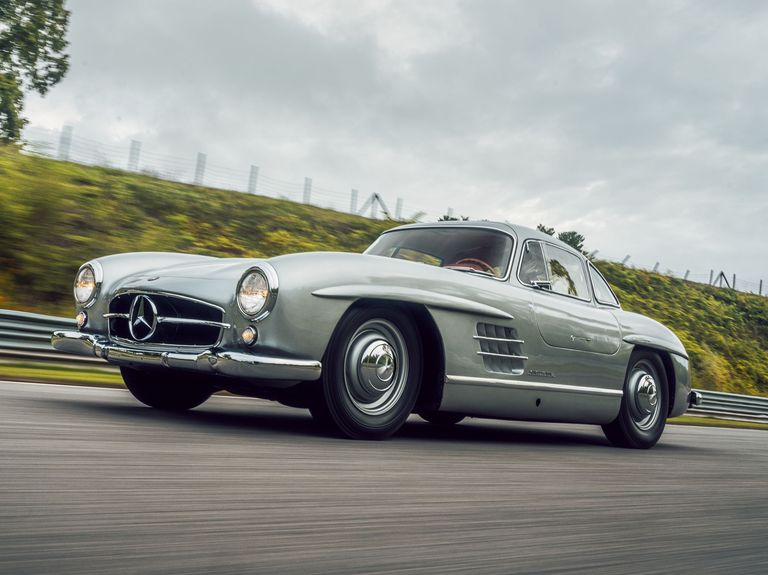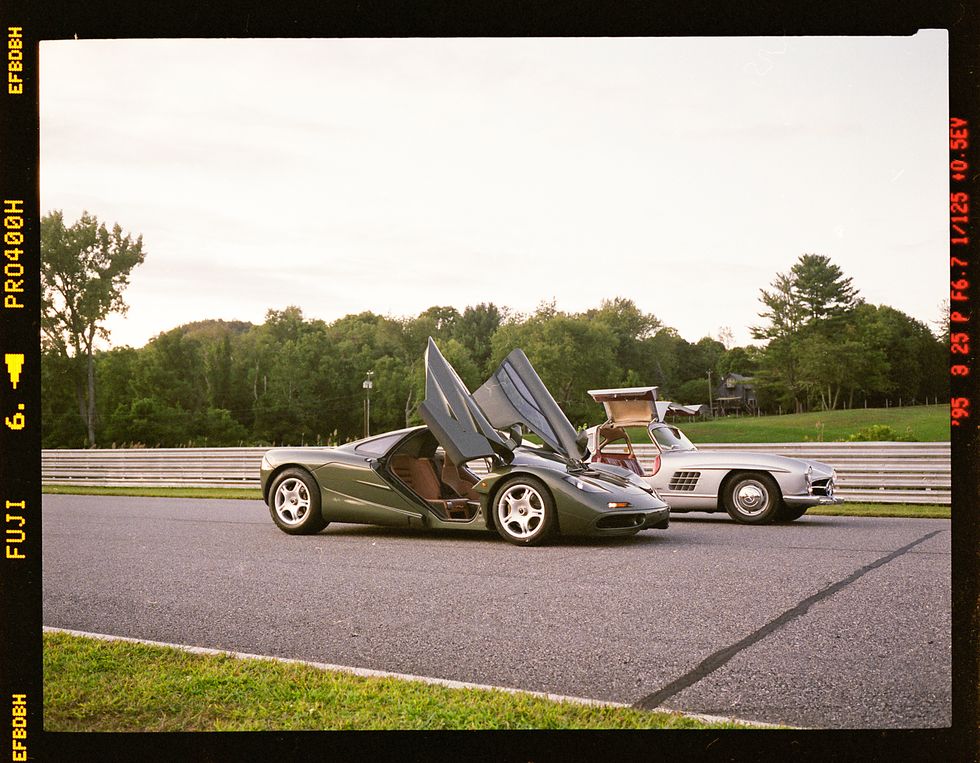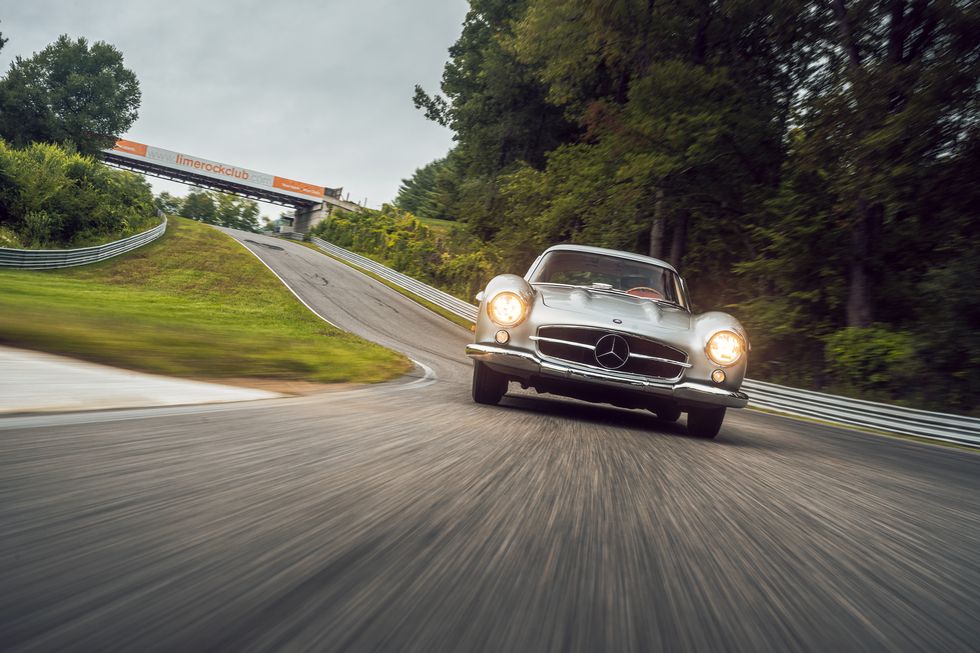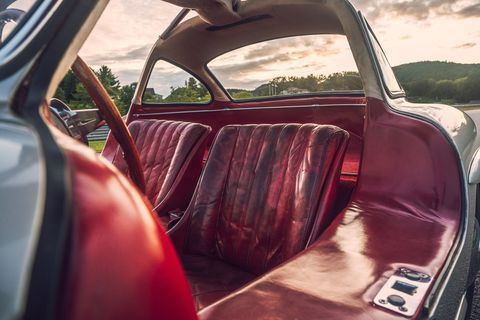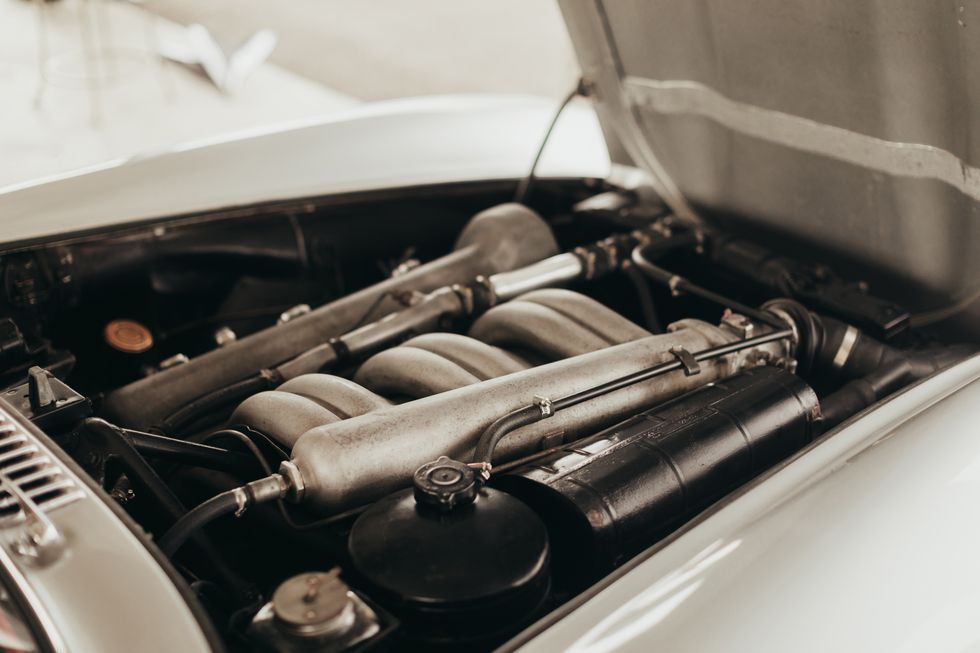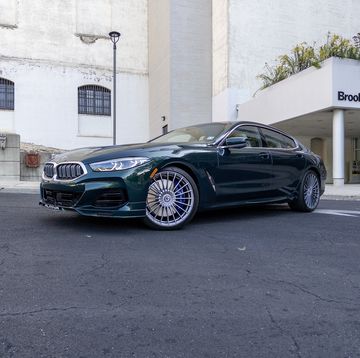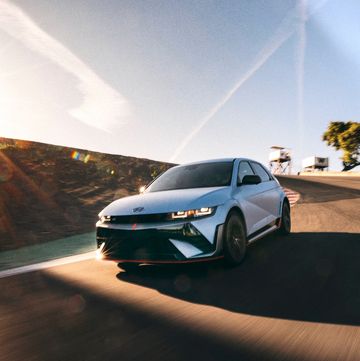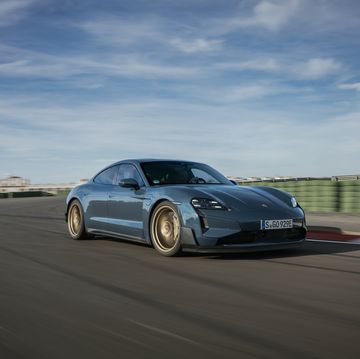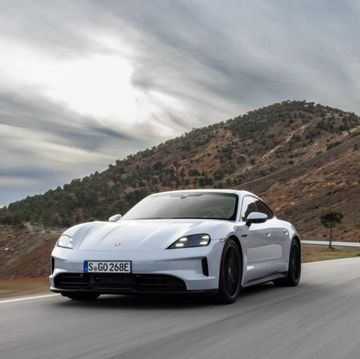First principles first: This car is exceptionally, fundamentally, absolutely beautiful.
That was, naturally, the whole idea. The W198 300SL came into being in 1953, when Max Hoffman, Austrian-American maverick auto importer and bon vivant, declared that Mercedes needed a marquee car, based in racing yet drivable on the road, to compete in the cosmopolitan American market.
This is an excerpt from our recent article, The Search For the Greatest Sports Car of All Time, where we rounded up eight of the most important enthusiast cars ever made, track-tested them at Lime Rock Park, and declared one ultimate winner. Enjoy this chapter on the Mercedes-Benz 300SL, but be sure to read the entire eight-part story here.
Hoffman also declared that this presumptive world-beater would need to be ready in six months for the ‘54 New York Auto Show. Then he ordered 1000 of them. Engineer Rudolf Uhlenhaut and his team optimistically figured the insanely short deadline meant they could build whatever breathtakingly ambitious car they wanted and no one would have time to stop them. They took the Le Mans- and Carrera Panamericana-winning W194 race car and—forgive some oversimplification—replaced enough race-car parts with M-B sedan stuff to ensure production.
But they kept the space frame, the gorgeous swooping shape, and those gullwing doors. And that pretty much made sure no one would ever refer to it as the W198 300SL.
You open those exquisite doors by pressing a little metal triangle with your thumb, levering the slim recessed handle from its slot and smacking it into your palm with a sensation that magically makes you grin. Then a firm yank and a step back as the thick, complexly curved hatch cranes up over your head, revealing the high, wide sill protecting the space frame’s tubes. The best way to get into the Gullwing is to perch, jauntily, on the sill, flip the hinged steering wheel down out of the way, and swing yourself into the seat, helped by the sturdy chrome grab handle on the end of the dash. More grinning. Turns out this revered and iconic automobile is really quite fun, even before it’s started.
It’s worth pointing out that this particular car might be history’s most fun Gullwing. It’s the personal ride of one Sam Posey—racer, commentator, artist, national treasure, and a copious grinner himself. He picked it up, used, in 1958. The convertibles were out, the hardtops were old news, and a 14-year-old Posey, captivated by Mercedes’s racing history, borrowed $2500 from his mom and brought the car back to the family farm. There he took it out into the freshly mowed fields and learned to heel-and-toe by flinging it around on the grass. Later, he slalomed through cones set up on Lime Rock’s front straight under the gimlet eye of the great John Fitch, whom he’d hired to coach him on race driving. In the fullness of time, Posey even brought his newborn son, John, home in this car.
People who talk patina and provenance often do so thoughtlessly, as if a name on a title or a seat bolster worn shiny by starlet buttocks counts for everything. But this Gullwing has lived a truly rich life, and it was easily the most striking, most human car we brought to Lime Rock, on a day when everything there was poster material.
To drive Mr. Posey’s car, we first had to start it, initially a daunting procedure. A sheet of handwritten notes helped: “Knob to right of oil temp—primer pump. Pull that out for 10 seconds—it will make noise.... Push back before starting (On hot days you can run w/it on).” Lower down, he notes that you can, if the car hasn’t been run in a while, “drive all the way into town with the choke on.” Once we’ve painstakingly followed all this, the improbably tiny key wakes the engine, the Gullwing’s stout heart.
The heart of the Gullwing is quite a lot of the Gullwing. The tall 3.0-liter six, a hotter version of the engine found in Merc’s sedans, is a big, massy iron-block unit. It’s tilted 50 degrees to accommodate the car’s technological centerpiece, a mechanical injection unit that sends fuel directly into the cylinders. This is remarkably modern stuff in a Fifties car, generations ahead of its time; expensive, complicated, but pretty bulletproof. It’s also the secret to the SL’s effortless, inexorable rush—0–60 is unremarkable at eight seconds, but the thing just keeps charging—and its 163-mph top speed. It’s also the reason for the 1000-mile oil-change interval; the injectors are driven off the engine, and there’s no ignition cutout, so any unburnt fuel—and there’s always some—seeps into the dry-sump engine’s massive 2.6-gallon oil supply. This in turn is why it’s bad, very bad, to flood the car with the choke or the secondary fuel pump during the starting procedure, or to shut down when the engine is above idle, or fail to warm the oil sufficiently to evaporate any unburnt gas, or any number of other things. Just keep a level head and don’t let it get to you. “The manual says not to warm it up, just engage a gear and drive away,” Posey says with a dismissive wave of his hand. “Just go.”
Just go, indeed. And once the legend is shaken off by the sheer elegant friendliness of this car, it really is as simple as that. You tuck into a decently firm little half-bucket that offers good support despite only reaching your shoulder blades. You’ve got a row of switches and toggles in front of you, unspoiled by labeling; Mercedes apparently expected owners to know what’s what from diligent study of the manual. The four-speed shifter is a long-necked ivory presence, the wheel a wooden-rimmed Nardi model Posey bought to replace the fussy original. There’s good red carpet everywhere, a nifty chrome luggage rail hooped around the base of the parcel shelf, and you can see out well in all directions. Of course, there’s a complex little ashtray. It’s all proper jet-age, styled comfortably between Rat Pack and Breaking the Sound Barrier. But the shifter goes into gear like any other car, the clutch comes out, the steering almost instantly lightens, and you’re off.
The magic, apart from the mythology, is in the simplicity. It just goes. Mind you, the Gullwing does not disappear beneath you; it’s not one of those airy ethereal wispy things. It’s a comforting, confident presence, and while the steering is slower than you might expect from a racing-derived design, it’s always talking. Once rolling, the complexity goes away, leaving just that gorgeous hood in front of you as the world flows by, rolled beneath the wheels by great floods of torque, everywhere a gorgeous ripping roar. That understressed engine is not a revver, and you won’t be shifting just to shift. The gears snick in neatly, but the throws are long and deliberate, and honestly there’s simply no need. The most challenging part of driving the car may be finding the correct angle for the wing windows to dissipate the ample cockpit heat.
Every person who drove the Gullwing wrote a variation on the same two notes: I would drive this car anywhere, coast to coast, to the drive-through for coffee, for groceries, anywhere; and... oh, man, just look at it.
They say the engine makes just 220 hp, but there always seems to be more than enough power. This car is a long-hauler, whether grand touring or endurance racing, and a methodical flowing pace is easily achieved. Around Lime Rock, second and third gears were all we needed. Especially given the swing axles, which can get tricky in long, fast turns, sending the tail out with a sort of internal hip-check.
Posey used that behavior to good effect in the 1971 Mount Equinox Hillclimb in Vermont, sliding through tight corners in second gear while hanging the rear out, blitzing hairpins with technique that would get you spun on big sweepers, winning the car’s only race. So it’s one-for-one, undefeated.
Any car, a sports car especially, is an exercise in optimism, a mechanical bet that good things will happen. The people who conceived of the Gullwing, the Germans and Austrians and Brits and Americans who engineered and raced and imported it, as well as many of those who ultimately bought it—they’d seen some things. When the car debuted, the latest war to end them all had been over for only 10 years, the cold war well underway. But... journalist Edward R. Murrow and an Army lawyer had given Joe McCarthy a good public pasting, Brown v. Board was changing the nation’s schools, and people were generally vindicated for liking Ike. Miles Davis and John Coltrane started working together, James Dean and Akira Kurosawa were both in theaters, and Ernie Kovacs was on TV. Among all this came the Gullwing, one more statement of faith in the belief that life would get better, happier, and more free; everything about the car made to last, with lines that will be breathtaking forever.
Today certainly has its challenges. But for now, it’s enough to feel the endless rush, watch shadows flow across and over the timeless shape, to sense the air growing cooler as we end a good roaring charge down the straightaway and glide beneath the bridge bearing the name of The Man himself. This day, this car, with that history, on that track? Beautiful. And that’s the whole idea.
To find out which car won our "Search for the Greatest Sports Car of All Time," click here.
